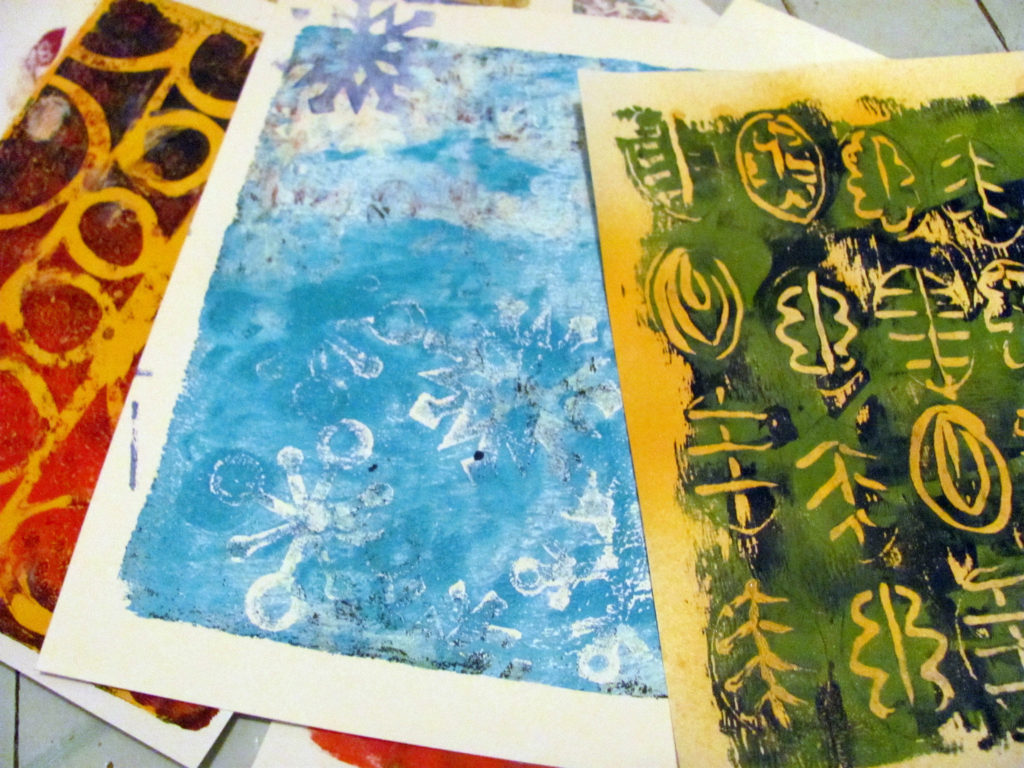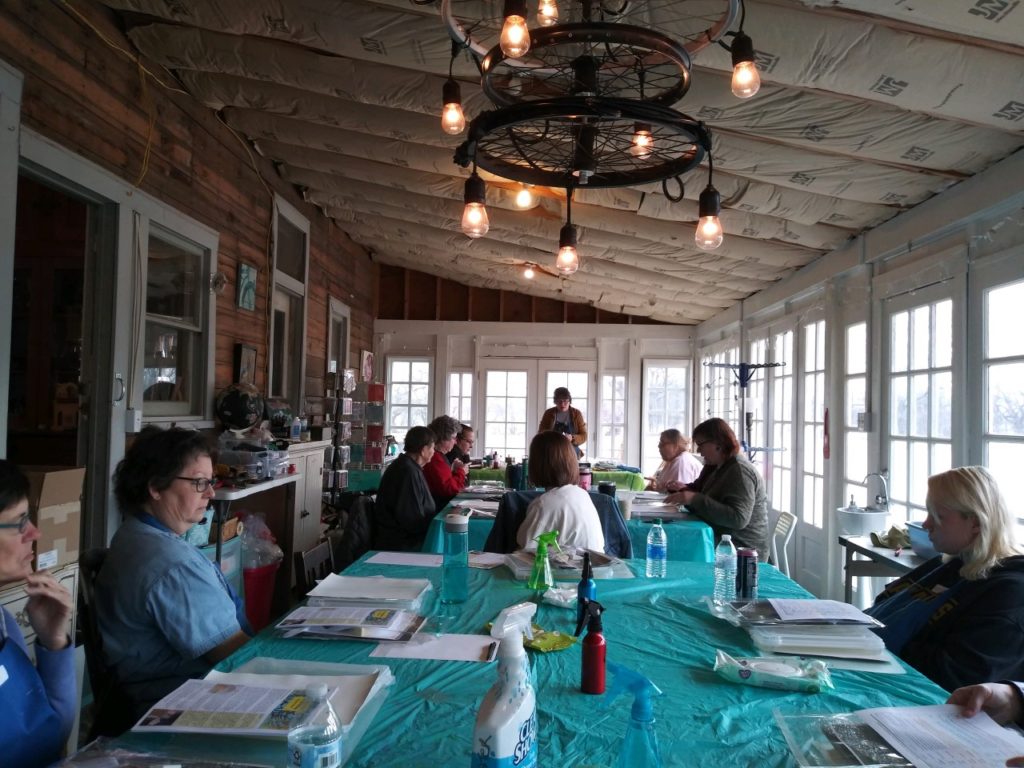I have had a blast making and playing around with the gel plate the last couple of months. And now I am all restocked on papers for art making, whether for backgrounds, collage papers, or even art in and of itself. I am itching to put them all to use, and they have inspired some art making ideas that I am anxious to try!

It turns out that the gel plate is not a new invention. The hectograph, gelatin duplicator or jellygraph is key to a printing process dating from the 1800s that involves transfer of an original, prepared with special inks, to a pan of gelatin or a gelatin pad pulled tight on a metal frame long before the invention of the xerox machine. While we have much more convenient methods of making copies now, the hectograph, or gel plate has once again become popular, but now for use in the art world!
Permanent gel printing plates have been made very popular by Gelli Arts. Other companies, like Speedball, have created something similar for printmaking, though they are a little more rigid. You can order a gel plate directly from gelliarts.com, or from DickBlick.com, or Amazon, and I know some Hobby Lobby stores now carry a gel plate.
While the Gelli Arts plates are of a very nice quality, they are also rather expensive. A 6×6 inch square plate is $19.99, an 8×10 is $29.99, and a 12×14 inch is a whopping $69.99! Many more sizes and shapes are now available. I find that I really enjoy having a plate that is large enough to fit an 8 1/2 x 11 inch or 9 x 12 inch paper.
Because of the high price of these gel plates, it has become increasingly popular to make your own. Originally the homemade plates were simply gelatin and water, much like making jello jigglers. But these plates had to be refrigerated and were only temporary, lasting weeks at best.
By adding glycerin and a touch of alcohol, a permanent plate can be achieved. There are many recipes from sources like thefrugalcrafter on YouTube. I have done some tweaking and this is the recipe I finally used for a 10 1/2 x 12 inch plate that was made in a flat,lidded, paper storage container that also serves as protective storage for the plate.
2 1/4 C. water
2 1/8 C. glycerin
1/8 C. alcohol or less (it doesn’t matter what percent alcohol for this)
10 2/3 Tbsp. gelatin (You can use packets of Knox, or bulk buy gelatin) If you buy bulk gelatin, be sure and get the unflavored version versus ‘plain’ gelatin which is somewhat granular and more difficult to use.

Mix gelatin with 1 C. cold water and glycerin.
Heat 1 1/4 C. water to boiling and add to gelatin mixture
Heat in microwave safe bowl for 1 minute. Stir and repeat as needed until mixture is clear (it will still be yellowish) rather than opaque.
Add alcohol and stir well
Pour into plate and skim off any ‘scum’ and pop bubbles

We had a great time playing with our gel plates and learning all kinds of techniques at Saturday’s gel plate workshop!

How many of you have a gel plate? What is your favorite gel plate technique?

kim
I tried several times and it was great the first couple of times but had real issues with cleaning it, not that it needed to be perfectly clean, but it just got icky …. maybe alcohol is the secret weapon. I ended up buying one a few years ago with a coupon, but it would be nice to have a smaller one, so maybe I’ll give this another try! Thanks for the tip!!
Kayann Ausherman
Hope this recipe works well for you!
Sharon
Hi – would isopropyl alcohol work with this recipe please?
Kayann Ausherman
Yes, you want to use isopropyl alcohol.
Sharon
Sorry – am a bit embarrassed to ask this but what does the ‘c’ stand for in the recipe? Thanks
Kayann Ausherman
The C stands for cups
Nan Reid
I have made several gelli plates and I used small amount of alcohol. After storing them in plastic container with lid, I find the. To be growing a mold in spots. What did I do wrong? My granddaughter touched them, could she have transferred bacteria to them?
Kayann Ausherman
I am sorry to hear that Nan! I made several about 4 years ago and have not had any trouble at all with mold, but I am sure climate would make some difference. My only suggestion is to add clove bud oil, which keeps mold from growing in sealed paint palettes, so it seems like that would work for gel plates as well. Let me know if that works and I will pass the information on to others. The other option is to not seal them up as well, but they will shrink and dry out over time.
Libbie Soffer
I love your calm demeanor as you go step by step….Why would you add gelatine to glycerine then add boiling water? My chemistry background would have me sprinkling gelatine over boiling water, then stirring in glycerine after dissolving gelatine in the boiling water…Have you done that?